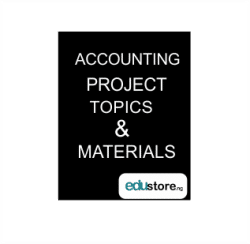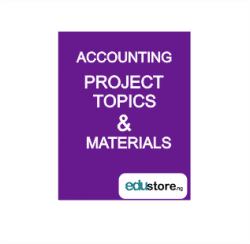ABSTRACT
Cost–Volume–Profit (C–V–P) analysis is the analysis of the cost evolution models, which points out the relations between cost, production volume and profit. Cost-Volume-Profit (CVP) analysis from the accounting profession perception is a managerial accounting technique that is concerned with the effect of sales volume and product costs on operating profit of a business. According to Hilton, (2000:312), cost-volume-profit (CVP) analysis focuses on the number of units sold as the sole cost and revenue driver. In other words, sales revenue is assumed to be linear in terms of quantity of the units sold. Conceptually, conventional linear cost-volume-profit (CVP) analysis is a simplified, short term planning technique that evolved as a practical version of the theoretical model of a firm (Marshall, A. 1890). From an accounting perspective it is compatible with the direct, or variable costing method of inventory valuation. To use the CVP model, a company must separate total costs into fixed and variable categories. The only activities that are allowed to affect variable costs in traditional cost-volume-profit analysis are production output and sales. Accordingly, fixed costs are those costs that do not vary with changes in the activity level. Hence, fixed costs are not constant. By definition, fixed simply means that these costs are not driven by short run changes in production or sales volume. Although explicit recognition of non-production volume related cost drivers is a key concept in activity based costing, the idea is ignored in the conventional linear CVP model. It is important to recognize that the concept of fixed and variable costs is a short run concept. All costs tend to vary in the long run as the company adds to its’ capacity to produce and distribute products and services.
DOWNLOAD COMPLETE WORK- For Reference Only: Materials are for research, citation, and idea generation purposes and not for submission as your original final year project work.
- Avoid Plagiarism: Do not copy or submit this content as your own project. Doing so may result in academic consequences.
- Use as a Framework: This complete project research material should guide the development of your own final year project work.
- Academic Access: This platform is designed to reduce the stress of visiting school libraries by providing easy access to research materials.
- Institutional Support: Tertiary institutions encourage the review of previous academic works such as journals and theses.
- Open Education: The site is maintained through paid subscriptions to continue offering open access educational resources.





